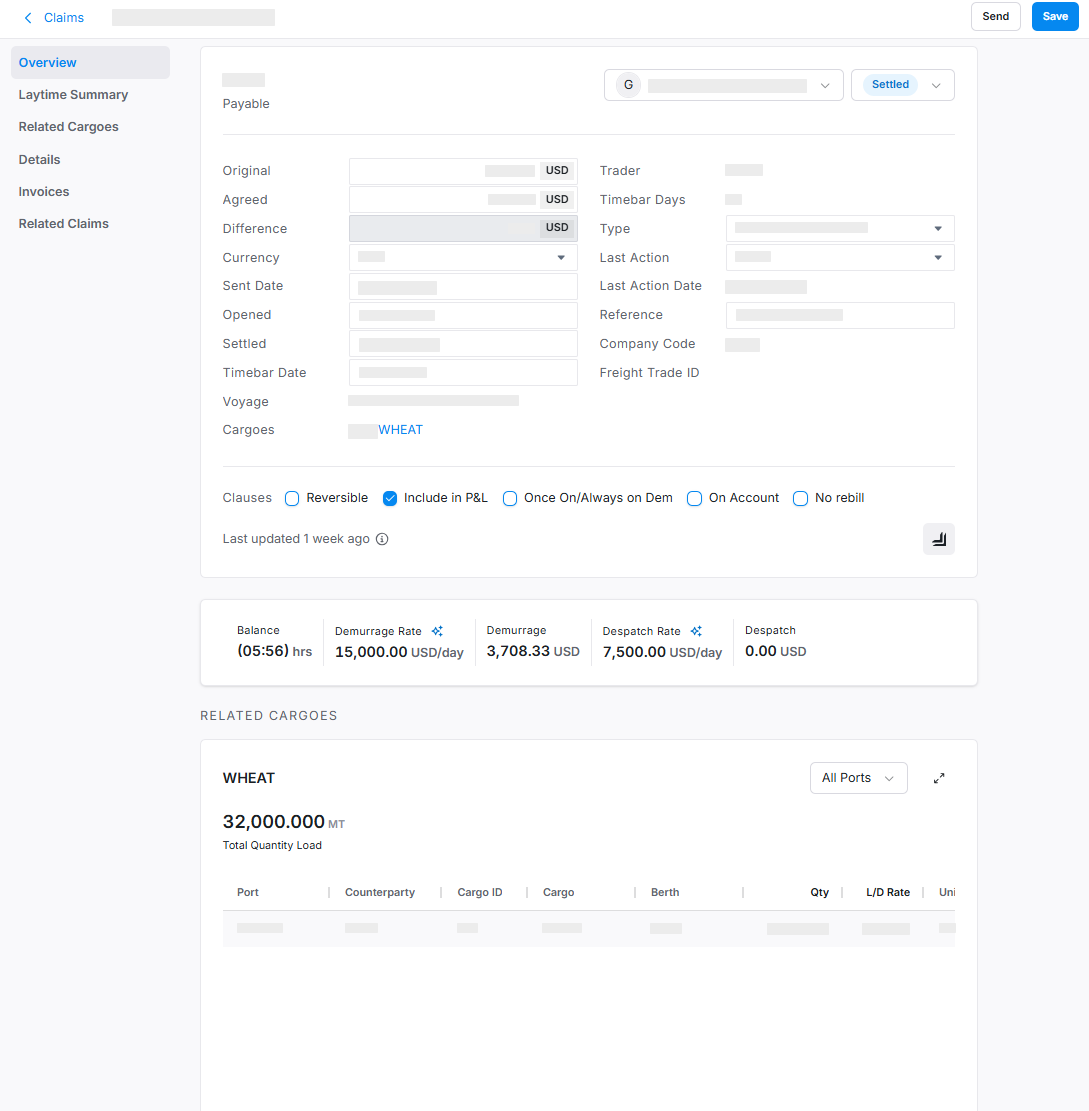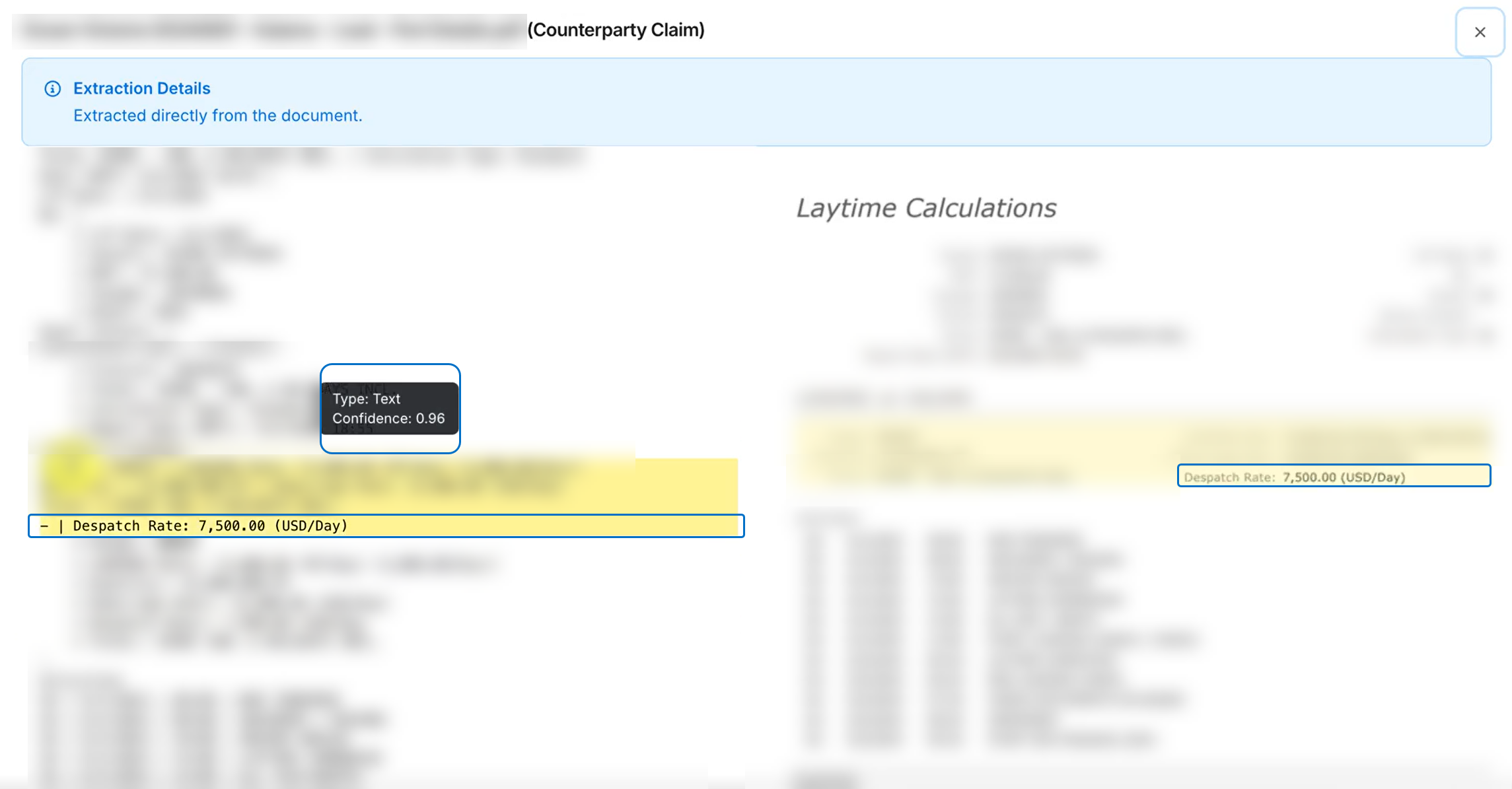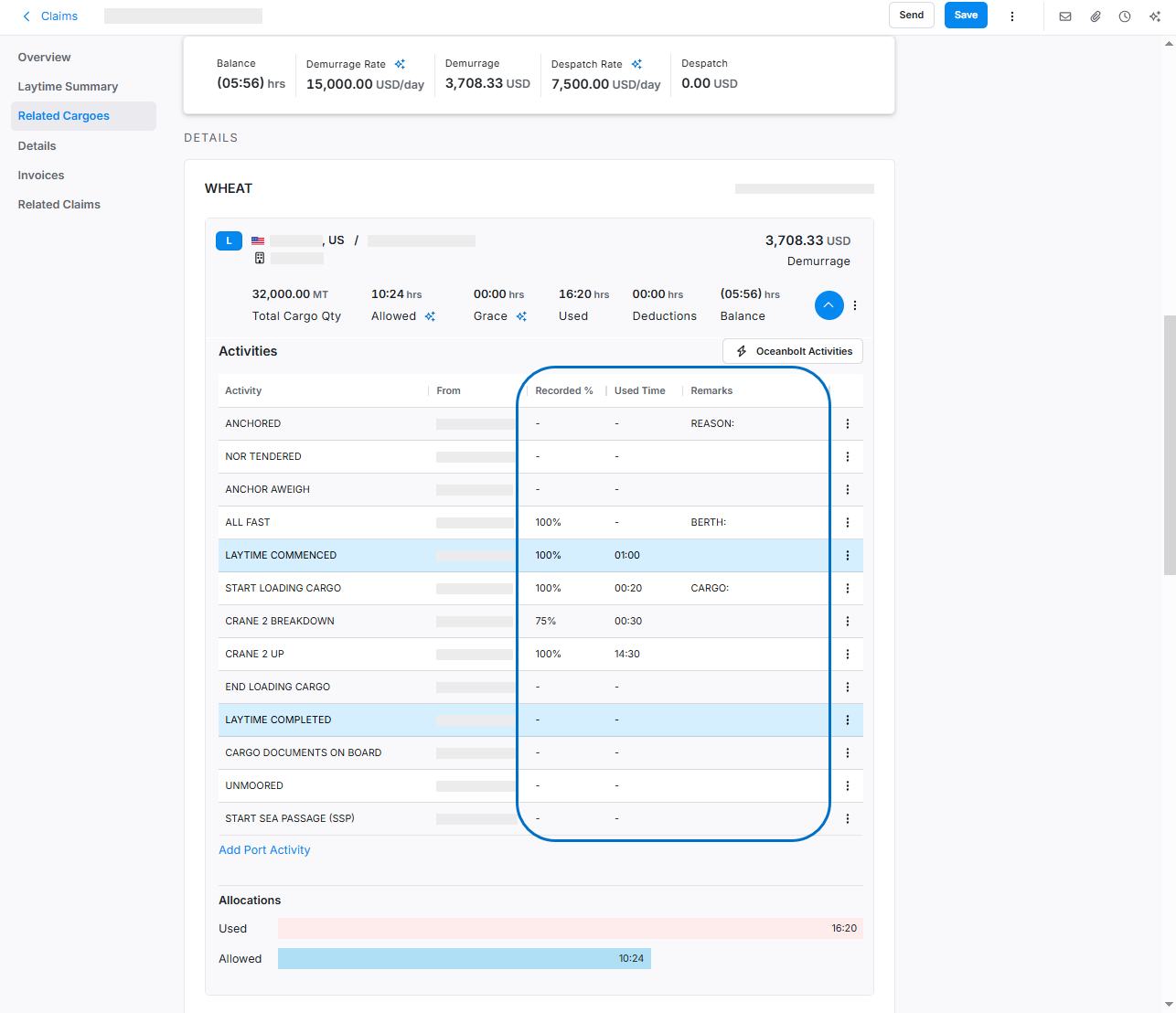IMOS X - Dry Claims Workflow for Demurrage Claims
Introduction
IMOS X Claims CoCaptain for the dry bulk market provides an end-to-end demurrage claims workflow supported by AI to ingest, classify, and extract key data points. This workflow reduces the time to process a claim for analysts, provides greater visibility into demurrage exposure earlier in the process, and provides greater confidence in the agreed amount for both parties in the claim negotiation.
Workflow
Do one of the following:
Navigate to the Claims workspace and open an existing demurrage claim.
Or select Create Claim and choose either Deduction or Time Counting. The example shown in this article uses the Time Counting method.

Following the standard claims workflow, input your claims details into the fields provided, including: Itinerary, Voyage, Cargo, and AP/AR claim type.

Note: In the Clauses area, the Reversible checkbox is deselected. Many dry claims are non-reversible due to the nature of the claim, so these claims are constructed or generated on a per-port basis.
Select the Despatch Rate to see the source documents it was extracted from and ensure its accuracy.

Despatch Rate source documents

Extraction Details for the Despatch Rate
If needed, you can manually override the rate provided, as shown in the following image.

Manual override of the despatch rate
In the Details section, review the following fields:
Recorded % - The percentage of time counted toward laytime
Used Time - The amount of used laytime
Remarks - A text field you can use to add additional comments

Review the Invoices and Related Claims sections as you would in the standard claims workflow.
